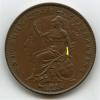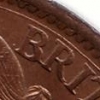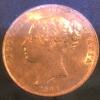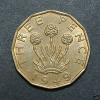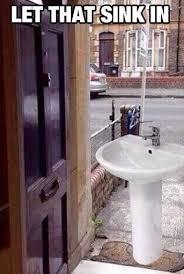Leaderboard
Popular Content
Showing content with the highest reputation on 09/21/2020 in all areas
-
If you are putting them on here Ian ,i suggest maybe a new thread to keep everything together. Maybe Copper pennies ,as will be easier to see as a reference and not get lost and easier to find.2 points
-
I have now done some statistics for 1843 pennies from my 5 year records of all ebay listings. The main reason for this post is to demonstrate, by using a rarer year with fewer dies, some difficulties in how to catalogue the 1839-1860 penny series. Looking first at the main split, there were 127 examples listed over the 5 years of my study. The vast majority of these were low grade, and many pictures were not great either, resulting in me marking up 27 of these as “cannot see REG clearly enough to decide whether there is a colon present”. I could, however, see the date. The above was rather handy because that left exactly 100 pieces, of which 62 had a colon, i.e. 62% of the 1843 population. I believe that will come as no surprise. I then split the 62 REG Colon coins as follows:- TYPE Count % of all 1843's Bramah 3b (DFF) 12 12% Cannot See DE(F)F 5 REG Doubled Colon 9 9% Remaining 36 Totals 62 At this point I checked all London Coins 1843 auction pictures back to 2009. There were 33 sales; a couple of these coins sold more than once over the years. I could see 13 without a REG Colon, and 20 with. Out of the 20 with REG Colon there were 3 DFF’s and 2 Doubled REG Colons, although the latter was the same piece being auctioned twice, 3 months apart….and with no mention of the doubled REG Colon. I guess this is not surprising, as this feature, to my knowledge, is not documented anywhere, and quite rare………..but the question is “should it be documented as an 1843 sub-variety?” Clearly this repair was ‘man-made’, and is also more obvious than other similar ‘colon’ repairs (e.g. the 1855 FID 3 colons, which I believe has been categorised in the CGS population report), so one could argue that the 1843 :: is worthy of being documented as a sub-variety. Having said that, if one goes down the path of documenting legend repairs then where do you ‘draw the line’? If you were to examine hundreds of Victorian ‘Young Head’ pennies you would eventually find repairs to every letter, colon, and numeral in the entire legend………….some of these being far more obvious than others, for example the repair to F of DEF seen on the 1841 penny, and already documented by Bramah as his type 2c. Collectors who own an 1841 Bramah 2c would naturally wish to see that type documented within any new reference material, but in my opinion there are other ‘same letter’ repairs even worse than that particular one, and more worthy of inclusion……see for example the multiple E repair pictured immediately below. I would definitely include as variety types any letter or number which has been repaired with a different letter or number. This would mean, for example, that the 1858 F/B in DEF should be included as a new variety. Whilst on the subject of colon dots, readers will also recall many posts on this forum about ‘dot varieties’. Dots have been seen on quite a few ‘Young Head’ pennies, e.g. 1854 (under the I of VICTORIA), 1855 (on the Queen’s forehead), 1846 (after T of GRATIA), 1853 (after I of GRATIA), 1858 (under 2nd 😎 and 1859 (next to rim above DEF colon). Some of these I think have been referenced by both CGS and London Coins. None of these are ‘man-made’, and as such could be regarded as not being ‘true’ varieties, but again collectors who own these pieces would probably wish to see them documented in any new reference material. Imagine omitting an 1897 dot penny or 1875 canon-ball out of a Victorian Bronze penny book! As for the DFF varieties, documented by Bramah, for both 1843 and 1844, these are clearly not F’s, but rather they are E’s which have lost a piece of the bottom leg. They are, however, quite sought after by variety collectors, who would undoubtedly ‘throw a wobbly’ if left out of new reference material. I am going to follow on from this post with one which shows the date varieties I have found on my 1843 REG Colon pennies.2 points
-
I think a website is the only viable option - a book is potentially out of date the day after it goes to the publisher whereas a website can be totally dynamic, updateable in an instant. I tinker with my penny websites on an almost daily basis, changing or adding things as knowledge gets added to from fellow collectors. The drawback, as has been pointed out, is that a website can vanish overnight or, even if the owner becomes unable to update it and leaves it untouched, it will be no more out of date than a book. Perhaps the answer is a shared ownership. For example, I have given Jerry the necessary information to take on my own websites in the event of some personal catastrophe.2 points
-
Last time I scrapped in a bunch or old pennies and halfpennies I got £3.30 per kilo. If my calculations are right, that means £1's worth or old pennies would get about £7.50 scrap - just over 3p per penny. (Time has passed, so the rate may have gone up by now.) Even though the coins are bronze, not pure copper, I have found most scrap dealers will give the same price as copper.1 point
-
1 point
-
Pictured below are the dates on my three 1843 REG Colon pennies. The reader will notice that even with a handful of dies there are date width variations, and there also appears to be a possible font difference to the numeral 4. There is also an even narrower date width on some 1843’s with no REG colon. Penny collectors will know that date width variations are covered by MG in his 2009 Bronze book, and also to some extent on his website for Coppers. Small / large numerals, narrow / wide dates are also already referenced elsewhere. It seems, therefore, that these would need to be covered in any new reference documentation to satisfy the needs of many collectors. But the question then arises as to how far this should be taken. If one looks at a more common year, 1851, I have found 12 different date varieties, including font variations. I have stopped counting on 1853’s and 1858’s! As for any font variations I think these are definitely worthy of documenting. I have not mentioned other different features seen on this series (e.g. Plume variations) but think I will leave it there for now, as I am aware that I am ‘hogging’ the site with my meanderings. Just one final fleeting thought, would you rather have a Fine 1843, or an EF+ 1857 Slender 7? I think the latter is rarer, but both can be had for around £100.1 point
-
Thanks for your comments about my Victorian Copper Penny pictures Jerry; also Mike and others.............. glad to be able to help. Whilst authoring a book has a certain 'prestigious'' appeal, in this day and age I don't actually think it is the best way of sharing / improving knowledge about coin varieties, particularly as new discoveries are made and regularly need adding to the knowledge base. I much prefer to have available to me websites such as Richard's englishpennies and rarestpennies sites, this Predecimal site, MG's website (which he has kindly kept going), or even past auction results (e.g. London Coins). A potential problem in coming to rely on these sites is, however, that they may of course disappear one day when site owners can no longer maintain. I definitely think that reference material for the 1839-1860 Victorian Penny varieties would benefit from being pulled together from these various websites, and other sources (e.g. Bramah and Peck), and probably introduce a completely new indexing method at the same time. Prior to that I think there would need to be discussion, for example from members of this forum, about how to do that, what to include and not include, and by providing examples from their own collections. I think I may try to do my next post on 1843 Pennies, giving a couple of examples to demonstrate how difficult such a task might be.1 point
-
1 point
